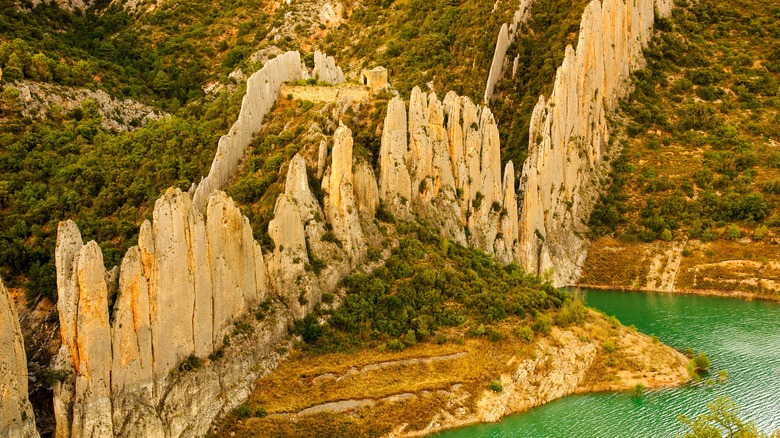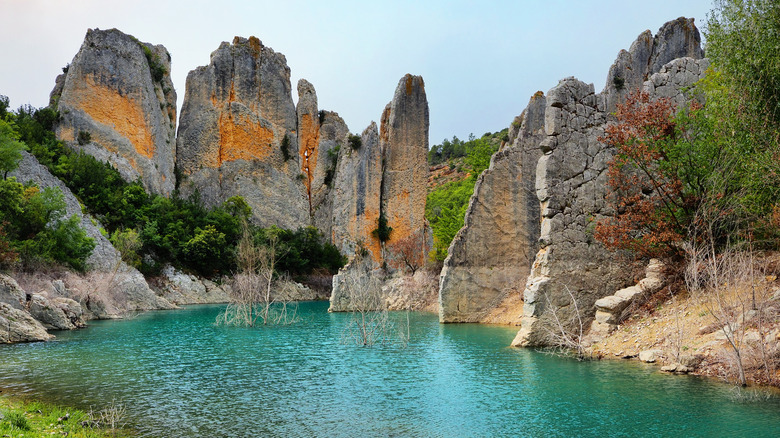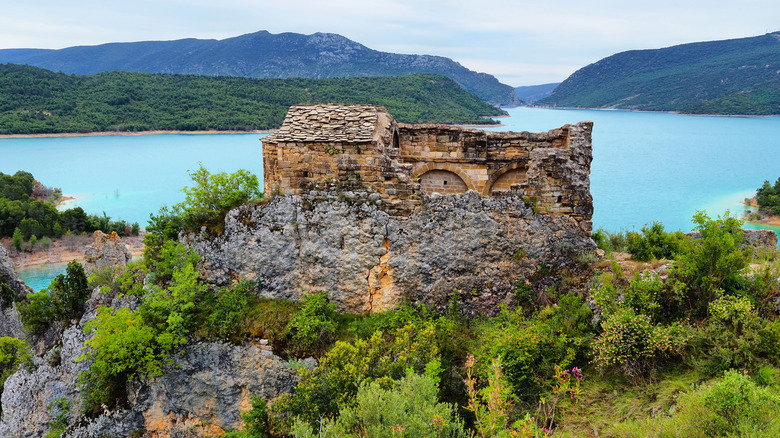The Mesmerizing Underrated Destination Best Known As The Great Chinese Wall Of Spain
Viewed together, these limestone slabs look like an ancient wall. Or maybe they resemble fingers. No, wait, they're headstones, or weathered lumber, or trolls' teeth. You can look at this half-mile ridge and compare it to so many different things, like a sedimentary Rorschach test. But one thing's for sure: The Wall of Finestres is spellbinding, a natural wonder that looks more like Middle Earth than rural Spain.
The "wall," which stands on the border between the Spanish states of Aragon and Catalonia, is rarely referred to by its official name, Roques de la Vila. The nickname for this attraction is "Finestres," and many like to call it the "Great Chinese Wall of Finestres," given its vague resemblance to the undulating Great Wall of China. There is nothing artificial about it, though; scientists have concluded that the "wall" dates back about 100 million years. While many tourists beeline to fashionable cities, this public area in the province of Huesca is one of Spain's many underrated destinations to add to your bucket list.
Hiking and kayaking around the Canelles Reservoir
The Wall of Finestres stands on the edge of the Canelles Reservoir, and when the water level is high, the stone segments seem to rise imposingly out of the turquoise depths. Bushes and scrub grow out of the cliffs and parchment-colored soil, lending the terrain a primal, desert-like atmosphere. This is a favorite destination for kayakers, who are able to paddle right up to the sheer rock faces. The rolling mountains around Finestres are called the Montsec Range, and they are famous for their dynamic topography and Fet Gorge, where you can also rent a kayak and paddle the channel between the gorge's steep banks. Most of the Finestres grounds are wide open to hikers, a web of official trails and desire paths.
The most direct way for travelers to reach the Wall of Finestres is to fly to Barcelona and drive three hours through the Catalonian highlands. This hilly region is historic and beguiling, with age-old towns clustered along ledges and slopes. You'll find a lot of local wine and tapas to enjoy on this route; as Spaniards are fond of saying, "No hay prisa" — there's no hurry. The vast majority of people in this region speak Spanish, so here are some essential words and phrases for your drive through Spain.
Majestic ruins on the edge of Catalonia
The name "Finestres" comes from a nearby town, which is now uninhabited. The last residents departed this hilltop community in 1960, leaving behind dilapidated stone houses, a chapel, and even the foundation of a Moorish castle, which is tucked between the "wall's" shafts. Visitors have to reach these locations on foot, but you can explore the roofless rooms and corridors to your heart's content. The castle was partly rebuilt into a shrine to Saint Vincent, and the views of the reservoir and surrounding mountains are too spectacular to be properly captured on film.
This is not the only ghost town in the region. Aragon is well known for its "abandoned villages," whose crumbling stonework was first mortared hundreds of years ago. Spain has struggled with a declining rural population for decades, and while this has triggered a cultural crisis across the Iberian Peninsula, many tourists are fascinated by these empty villages and their haunting architecture. Visitors should take the usual precautions when exploring any place without people or services nearby, but these extinct medieval communities feel like a mix of wilderness and archaeological site. This is one reason Spain has become Europe's reigning champion for road trips.


